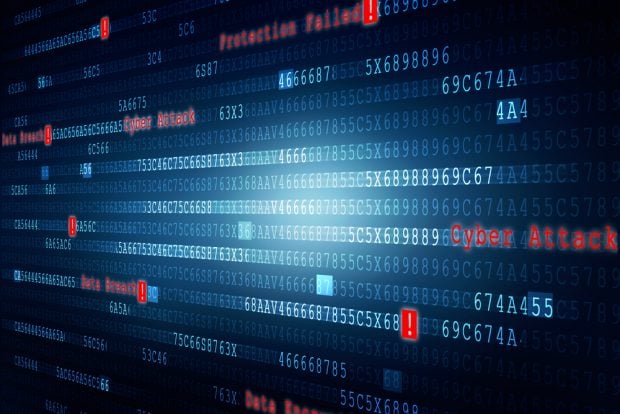We live in an age of rapid technological advances that are continuously influencing the way we access and exchange information. Our use of the Internet, e-mail and new electronic devices condition us with a need for information on demand. Yet we find ourselves in line at the grocery store patiently waiting for someone to write a paper check. Why is it that consumers, especially in the United States, still cling to the paper check even as electronic payment methods grow in number? Advantages of electronic versus traditional paper payment systems We certainly all remember the impact of the September 11 tragedy on the check-processing world. It is estimated that the Federal Reserve absorbed around a billion dollars simply because checks could not be transported by air. This prompted us to focus on the Check Truncation Act as a method to electronify check presentment. The Act doesn't really address the eventual migration from paper to electronics, but provides an interim step allowing consumers to use paper checks while streamlining the payment process. Speed of presentment, efficiency of processing and cost avoidance in terms of transportation are benefits to electronic check presentment. Current status of payment methods in the United States In the United States, the average consumer writes more than 15 checks per month. The information is derived from the 2000 Federal Reserve System check study. According to the Bank for International Settlements (BIS) (2000), the U.S. rate is three times higher in comparison to Canada or the United Kingdom, and 15 times higher than in many European countries. Contrary to the experience in most other industrialized countries, the United States appears to have seen growth in total check volume and value in the 1990s. Why the discrepancy? Two of the reasons may be pricing and float assignment. For example, according to the article, "Why do we use so many checks?" published in Economic Perspectives by The Federal Reserve Bank of Chicago, financial institutions in Scandinavia and Norway saw rapid declines in check use after marginally increasing their fees. In Norway, check use decreased from 72 million checks in 1988 to 6.2 million in 2000 after a one percent increase in pricing. Canadian banks, on the other hand, give check payees immediate credit and availability of their funds, while simultaneously backdating checks to remove any float benefit to the paying bank. Corporations, however, are charged for float when significant distances between the drawee and the depository institutions affect the timing of payment. Consumer habits resist change Consumers in the U.S. have been resistant to changing their check payment methods for three reasons. First is the ease of use and accessibility of the check. In 1998 the Survey of Consumer Finances indicated that approximately 87 percent of U.S. households had checking accounts. Also, checks are one of the most widely accepted forms of payment by merchants and billers alike. Second, consumers are looking for greater benefits from electronic payments before they make the decision to change their check-writing habits. For example, the additional services sometimes offered by credit card issuers such as extended warrantees and frequent-user awards would be an apparent incentive to their use. Third, when using checks, the consumer enjoys a perceived control over the payment. The desire to control when payments are made and the perception that there is float contributes to the continued use of paper payments. Merchants see checks as reasonable From the merchants' point of view, checks continue to be a reasonable cost item compared to other payment methods. According to the Federal Reserve System (2001) point-of-sale check numbers, it is estimated that 75 to 97% of checks accepted at the point of sale were verified in 2000, and this is the least expensive form of payment for a merchant to accept. Like financial institutions, some merchants are starting to electronify checks to reduce costs. In this scenario, checks are converted to ACH transactions. The high startup costs to retrofit point-of-sale stations may be an issue in this strategy. Financial institutions hold differing points of view In the U.S., the Federal Reserve Board's 1994 Functional Cost Analysis found only marginal differences between the costs of processing electronic payments versus paper. ACH payments were estimated at 14 cents on average, while check processing was estimated at approximately 14.6 cents per item. Norwegian studies, on the other hand, indicated that check transactions are three times as expensive as electronic funds transfer point-of-sale and other similar electronic transactions. Revenue is another consideration. Financial institutions continue to earn revenue from checking accounts, particularly from overdraft fees. There is evidence that the evolution to electronic payments is on the upswing. The Fed's most recent study referenced that approximately 42.5 billion checks were paid in 2000. This is a downward revision of a previous estimate of 49.5 billion. While checks are still the dominant form of payment, electronic payments have increased by 500 percent since 1979. The role of the corporates in this environment will be to identify methods to process paper items more efficiently and effectively. Electronification of check processing such as the traditional electronic check presentment model with paper checks to follow-or the upcoming image exchange model in which checks are truncated-are areas corporate credit unions can explore. Collaboration among corporates to reduce costs and duplication of data is another option. It may not be too far removed to consider a national credit union image archive. Collectively, as check electronification grows, we need to start thinking in terms of merging our check and ACH processing into one stream for stop payment validation. A proactive approach to convergence The signposts are here – checks are declining and electronic payments are increasing. The timing of the convergence is still unclear, but we need to position ourselves by taking proactive steps now. We need to be involved in the formation of check electronification legislation, in pilots and in collaboration with one another. We need to understand what the future landscape will look like, and be prepared to work together for success. Editor's note: Read more about share drafts in a special report on pages 20-22.
Complete your profile to continue reading and get FREE access to CUTimes.com, part of your ALM digital membership.
Your access to unlimited CUTimes.com content isn’t changing.
Once you are an ALM digital member, you’ll receive:
- Critical CUTimes.com information including comprehensive product and service provider listings via the Marketplace Directory, CU Careers, resources from industry leaders, webcasts, and breaking news, analysis and more with our informative Newsletters.
- Exclusive discounts on ALM and CU Times events.
- Access to other award-winning ALM websites including Law.com and GlobeSt.com.
Already have an account? Sign In
© 2024 ALM Global, LLC, All Rights Reserved. Request academic re-use from www.copyright.com. All other uses, submit a request to [email protected]. For more information visit Asset & Logo Licensing.









